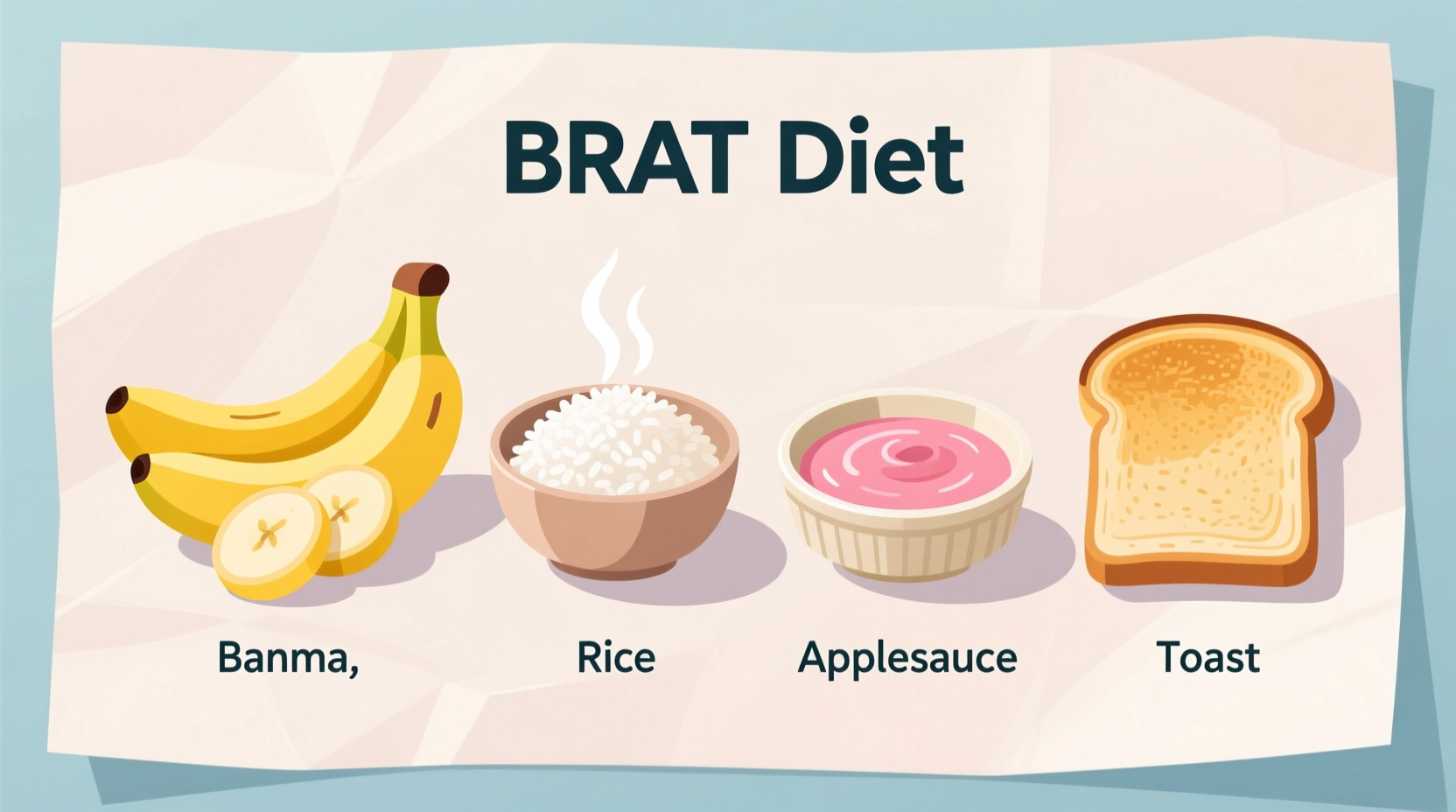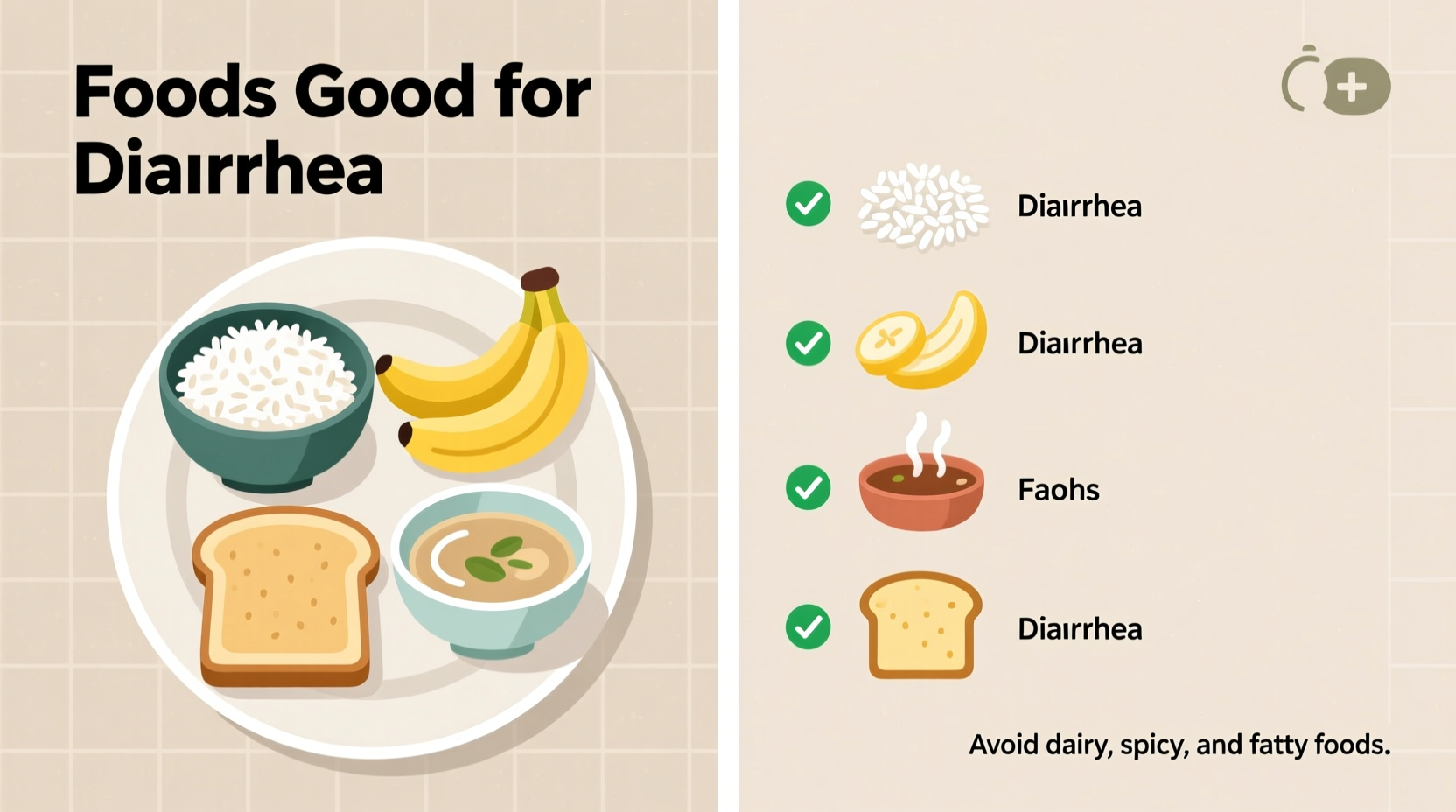When experiencing diarrhea, the most effective foods include bananas, white rice, applesauce, and toast (BRAT diet), plus broth-based soups and oral rehydration solutions. Avoid dairy, fatty foods, and high-fiber items until symptoms improve. Most cases resolve within 48 hours with proper hydration and dietary management.
If you're searching for what food is good for diarrhea, you need practical, evidence-based guidance that works right now. Diarrhea affects millions annually, causing discomfort and potential dehydration. The right dietary choices can shorten your recovery time by 30-50% according to Mayo Clinic research, while poor food choices often prolong symptoms.
Why Food Choices Matter During Diarrhea
Your digestive system becomes hypersensitive during diarrhea episodes. Certain foods soothe irritated intestines while others trigger further distress. The goal isn't just symptom relief—it's supporting your gut's natural recovery process while maintaining essential nutrition.

Immediate Relief Foods: First 24 Hours
During acute diarrhea, focus on binding foods that reduce intestinal contractions and replace lost electrolytes:
- BRAT diet staples: Bananas (rich in potassium), white rice (low-fiber carbohydrate), applesauce (pectin content), and toast (easily digestible)
- Clear broths: Chicken or vegetable broth provides sodium and hydration without irritation
- Oral rehydration solutions: WHO-recommended mixtures that prevent dehydration better than water alone
According to CDC guidelines, proper hydration with electrolyte solutions reduces hospitalization risk by 40% in moderate diarrhea cases. Avoid sports drinks—they contain excessive sugar that can worsen symptoms.
Progressive Reintroduction: Days 2-3
As symptoms improve, gradually expand your diet while monitoring your body's response:
| Food Category | Recommended Options | When to Introduce |
|---|---|---|
| Proteins | Boiled chicken, baked fish, eggs | Day 2 if symptoms improving |
| Grains | Oatmeal, crackers, pasta | Day 2-3 |
| Probiotic foods | Yogurt with live cultures, kefir | Day 3 |
This phased approach aligns with American Gastroenterological Association recommendations for optimal gut recovery. Probiotic foods help restore beneficial bacteria depleted during diarrhea episodes.
Foods That Worsen Diarrhea: Critical Avoidances
Certain foods trigger additional intestinal contractions or draw water into the bowel, intensifying symptoms:
- Dairy products: Lactose intolerance often develops temporarily during diarrhea
- High-fiber foods: Raw vegetables, whole grains, and beans increase bowel movements
- Fatty or fried foods: Difficult to digest and stimulate intestinal activity
- Artificial sweeteners: Sorbitol and mannitol have laxative effects
A 2023 NIH study found that eliminating trigger foods reduced diarrhea duration by an average of 18 hours compared to unrestricted diets. Keep a food-symptom journal to identify your personal triggers.
Hydration: The Overlooked Recovery Factor
Dehydration poses greater risks than the diarrhea itself. Replace fluids with:
- Small sips of oral rehydration solution (50-100ml every 15 minutes)
- Herbal teas like chamomile or ginger (soothes intestinal lining)
- Electrolyte-enhanced water (avoid plain water which dilutes remaining electrolytes)
Monitor hydration status through urine color—pale yellow indicates proper hydration, while dark yellow suggests continued fluid loss. The World Health Organization reports that proper hydration management prevents 90% of diarrhea-related complications.
When Dietary Management Isn't Enough
Dietary adjustments resolve most acute diarrhea cases within 48 hours. Seek medical attention if you experience:
- Blood or black stools
- Fever above 102°F (39°C)
- Symptoms lasting more than 48 hours in adults
- Signs of severe dehydration (dizziness, minimal urination)
Chronic diarrhea (lasting weeks) requires professional diagnosis as it may indicate underlying conditions like IBS, Crohn's disease, or infections needing specific treatment.
Sample Recovery Meal Plan
This progression plan supports gradual gut healing while providing essential nutrition:
- Day 1: Clear broths, bananas, weak tea, oral rehydration solution
- Day 2: BRAT components, boiled potatoes, herbal tea
- Day 3: Add lean proteins, cooked carrots, probiotic yogurt
- Day 4: Gradually reintroduce normal diet while monitoring tolerance
This structured approach, recommended by gastroenterologists, minimizes relapse risk while supporting complete recovery. Most people return to regular diets within 5-7 days using this method.











 浙公网安备
33010002000092号
浙公网安备
33010002000092号 浙B2-20120091-4
浙B2-20120091-4